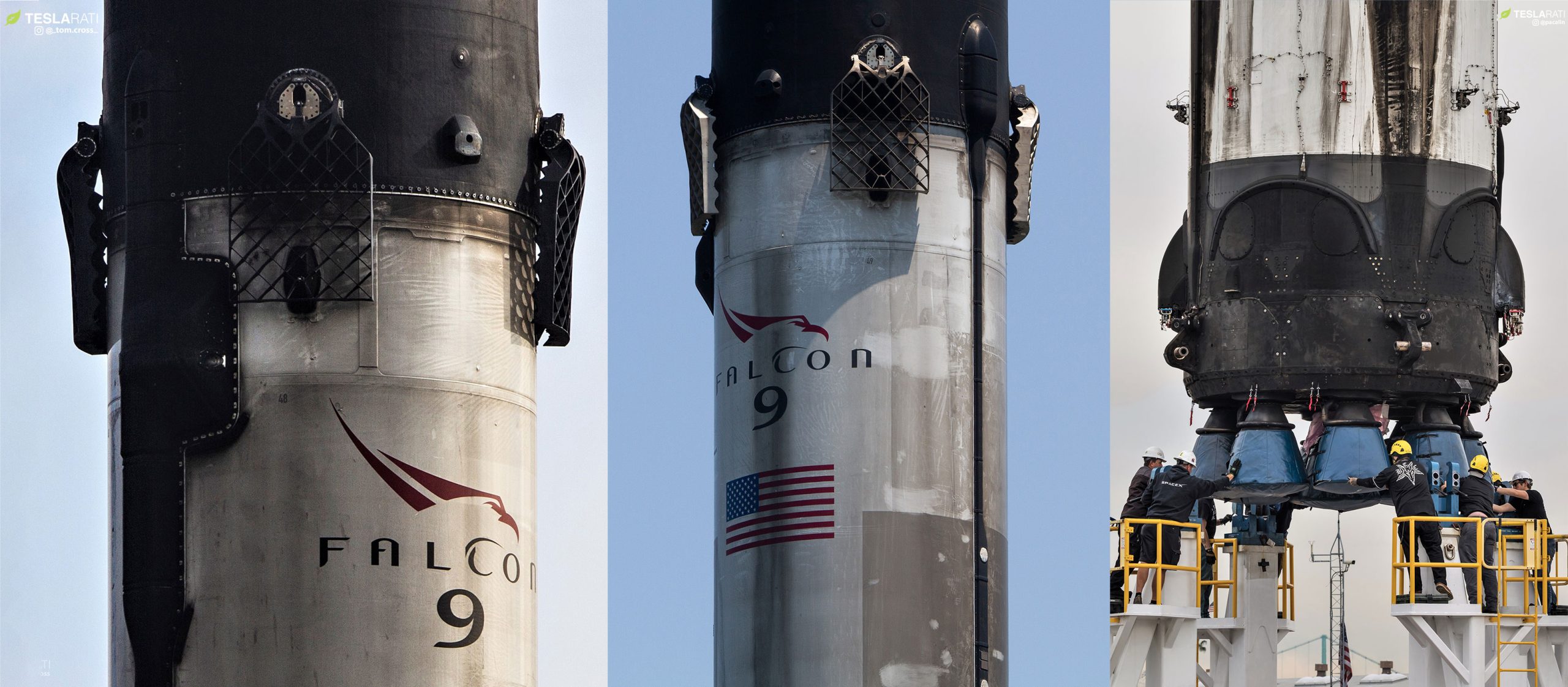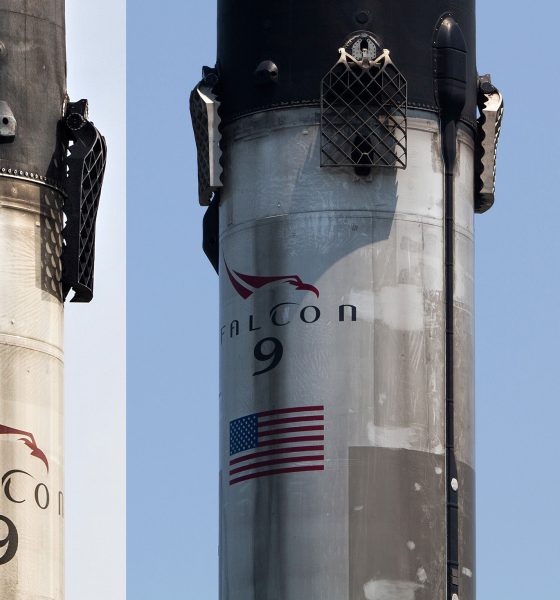

News
SpaceX sets new Falcon 9 Block 5 reusability milestones for second half of 2019
Speaking at 2019’s Asia-Pacific Satellite (APSAT) Conference, SpaceX Vice President of Commercial Sales Jonathan Hofeller – squeezed into a sea of breaking-news updates – announced that the company plans to launch the same Falcon 9 Block 5 booster for the fifth (or sixth) time by the end of 2019.
Just an add-on at the end of a number of updates focused on SpaceX’s next-generation Starship/Super Heavy rocket, the phrasing reported by SpaceNews.com technically means that there are plans for a Falcon 9 booster to launch for the sixth time in the second half of 2019. The demonstration of such an extreme level of operational reusability barely 18 months after Falcon 9 Block 5’s debut would make it clear that SpaceX’s latest Falcon upgrade has been a resounding success. In line with those positive signs, Hofeller also noted that SpaceX is already starting to transfer the fruits of those labors to its customers by permanently lowering the base price of Falcon 9 launch contracts.

Block 5 off to a spectacular start
First reported on by SpaceNews’ Caleb Henry, one of a few spaceflight journalists able to attend 2019’s Jakarta, Indonesia-based APSAT conference, details about the near-term future of Falcon 9 Block 5 reusability milestones were effectively tacked on at the end of much higher-profile breaking-news tidbits. Although wildly ambitious Starship goals led headlines (stay tuned for Teslarati’s own analysis later this week), the fact remains that ambitious development goals are inherently tenuous and likely to slip, particularly when the subject is large-scale, fully-reusable launch vehicles developed from a nearly blank slate.
What is not up for debate, however, is the fact that SpaceX’s Falcon 9 Block 5 upgrade is already flying routinely and reliably. After a successful debut in May 2018, Block 5 took over all SpaceX launches less than two months later. Since then, a total of 12 freshly-built Block 5 boosters have supported 16 Falcon 9 and 2 Falcon Heavy launches, ten – more than half – of which involved flight-proven boosters. According to official statements made recently by SpaceX executives, Block 5 boosters are expected to support an additional 12-19* launches in the second half of 2019.
*Derived by stacking “2-6 dedicated Starlink launches” and SpaceX’s 2019 target of 18-21 non–Starlink launches

Tied directly to claims that the same Falcon 9 Block 5 booster will launch for the fifth or sixth time by the end of 2019, SpaceX already has three Falcon 9 boosters that have each completed a trio of launches, as well as an additional five with either one or two launches under their belts. Pictured at the top of the article, all three thrice-flown Falcon 9 boosters – B1046, B1048, and B1049 – could arguably be selected to become the next pathfinder as SpaceX prepares to put boosters through their fourth launches and beyond.
Rumored to be assigned to Crew Dragon’s in-flight abort (IFA) test prior to a major capsule anomaly on April 20th, B1046 could be off the manifest if SpaceX is confident that said IFA test can still be performed within the next several months. It’s currently unclear if that is a viable option for SpaceX’s Crew Dragon schedule, likely to remain uncertain until the failure investigation is fully completed and any necessary design/hardware/software fixes have been implemented. B1046 completed its third launch in December 2018 (a full six months ago), followed by B1048 in February 2019 and B1049 in May 2019. Although the “unknown territory” aspect of Block 5 reuse milestones is becoming less noteworthy, SpaceX is still likely to treat B104X’s fourth launch as a pathfinder, requiring extra time to dot I’s and cross T’s. With B1046 and B1048 potentially ready to go, that milestone could come any time now.

SpaceX customers already reaping financial benefits
Meanwhile, although certain heads-in-sand competitors continue to act and claim otherwise, SpaceX has reportedly normalized earlier prices for customers flying on flight-proven milestone missions. Speaking at APSAT, SpaceX’s Jonathan Hofeller indicated that that pricing is now the company’s “normal pricing”, pushing Falcon 9’s base price as low as ~$50M according to comments CEO Elon Musk made about a year ago. Two years prior to those comments and about six months prior to SpaceX’s first-ever booster reuse, COO and President Gwynne Shotwell reported that the company was offering discounts of ~10% for customers willing to contract launches on flight-proven Falcon 9 boosters.
In other words, SpaceX has cut Falcon 9’s base launch costs by anywhere from 10-20% over the last three years, a period in which the Falcon 9 V1.2 Full Thrust rocket’s capabilities were also dramatically upgraded from Block 1 (debut: December 2015) through Block 5 (debut: May 2018). Speaking during a press conference focused on Falcon 9 Block 5’s launch debut, CEO Elon Musk estimated that SpaceX has spent more than $1 billion to develop Falcon 9 reusability, while he previously estimated Falcon Heavy’s development costs to be well north of ~$500M. Musk and other execs have previously confirmed that SpaceX means to recoup some or all of that investment, indicating that the current margins of Falcon 9 launch contracts must be extremely favorable.

SpaceX has a healthy commercial manifest and will need to support dozens to hundreds of its own dedicated Starlink launches in order to orbit an operational and profitable constellation.
Check out Teslarati’s Marketplace! We offer Tesla accessories, including for the Tesla Cybertruck and Tesla Model 3.

News
Tesla FSD fleet is nearing 7 billion total miles, including 2.5 billion city miles
As can be seen on Tesla’s official FSD webpage, vehicles equipped with the system have now navigated over 6.99 billion miles.

Tesla’s Full Self-Driving (Supervised) fleet is closing in on almost 7 billion total miles driven, as per data posted by the company on its official FSD webpage.
These figures hint at the massive scale of data fueling Tesla’s rapid FSD improvements, which have been quite notable as of late.
FSD mileage milestones
As can be seen on Tesla’s official FSD webpage, vehicles equipped with the system have now navigated over 6.99 billion miles. Tesla owner and avid FSD tester Whole Mars Catalog also shared a screenshot indicating that from the nearly 7 billion miles traveled by the FSD fleet, more than 2.5 billion miles were driven inside cities.
City miles are particularly valuable for complex urban scenarios like unprotected turns, pedestrian interactions, and traffic lights. This is also the difference-maker for FSD, as only complex solutions, such as Waymo’s self-driving taxis, operate similarly on inner-city streets. And even then, incidents such as the San Francisco blackouts have proven challenging for sensor-rich vehicles like Waymos.
Tesla’s data edge
Tesla has a number of advantages in the autonomous vehicle sector, one of which is the size of its fleet and the number of vehicles training FSD on real-world roads. Tesla’s nearly 7 billion FSD miles then allow the company to roll out updates that make its vehicles behave like they are being driven by experienced drivers, even if they are operating on their own.
So notable are Tesla’s improvements to FSD that NVIDIA Director of Robotics Jim Fan, after experiencing FSD v14, noted that the system is the first AI that passes what he described as a “Physical Turing Test.”
“Despite knowing exactly how robot learning works, I still find it magical watching the steering wheel turn by itself. First it feels surreal, next it becomes routine. Then, like the smartphone, taking it away actively hurts. This is how humanity gets rewired and glued to god-like technologies,” Fan wrote in a post on X.
News
Tesla starts showing how FSD will change lives in Europe
Local officials tested the system on narrow country roads and were impressed by FSD’s smooth, human-like driving, with some calling the service a game-changer for everyday life in areas that are far from urban centers.

Tesla has launched Europe’s first public shuttle service using Full Self-Driving (Supervised) in the rural Eifelkreis Bitburg-Prüm region of Germany, demonstrating how the technology can restore independence and mobility for people who struggle with limited transport options.
Local officials tested the system on narrow country roads and were impressed by FSD’s smooth, human-like driving, with some calling the service a game-changer for everyday life in areas that are far from urban centers.
Officials see real impact on rural residents
Arzfeld Mayor Johannes Kuhl and District Administrator Andreas Kruppert personally tested the Tesla shuttle service. This allowed them to see just how well FSD navigated winding lanes and rural roads confidently. Kruppert said, “Autonomous driving sounds like science fiction to many, but we simply see here that it works totally well in rural regions too.” Kuhl, for his part, also noted that FSD “feels like a very experienced driver.”
The pilot complements the area’s “Citizen Bus” program, which provides on-demand rides for elderly residents who can no longer drive themselves. Tesla Europe shared a video of a demonstration of the service, highlighting how FSD gives people their freedom back, even in places where public transport is not as prevalent.
What the Ministry for Economic Affairs and Transport says
Rhineland-Palatinate’s Minister Daniela Schmitt supported the project, praising the collaboration that made this “first of its kind in Europe” possible. As per the ministry, the rural rollout for the service shows FSD’s potential beyond major cities, and it delivers tangible benefits like grocery runs, doctor visits, and social connections for isolated residents.
“Reliable and flexible mobility is especially vital in rural areas. With the launch of a shuttle service using self-driving vehicles (FSD supervised) by Tesla in the Eifelkreis Bitburg-Prüm, an innovative pilot project is now getting underway that complements local community bus services. It is the first project of its kind in Europe.
“The result is a real gain for rural mobility: greater accessibility, more flexibility and tangible benefits for everyday life. A strong signal for innovation, cooperation and future-oriented mobility beyond urban centers,” the ministry wrote in a LinkedIn post.
News
Tesla China quietly posts Robotaxi-related job listing
Tesla China is currently seeking a Low Voltage Electrical Engineer to work on circuit board design for the company’s autonomous vehicles.

Tesla has posted a new job listing in Shanghai explicitly tied to its Robotaxi program, fueling speculation that the company is preparing to launch its dedicated autonomous ride-hailing service in China.
As noted in the listing, Tesla China is currently seeking a Low Voltage Electrical Engineer to work on circuit board design for the company’s autonomous vehicles.
Robotaxi-specific role
The listing, which was shared on social media platform X by industry watcher @tslaming, suggested that Tesla China is looking to fill the role urgently. The job listing itself specifically mentions that the person hired for the role will be working on the Low Voltage Hardware team, which would design the circuit boards that would serve as the nervous system of the Robotaxi.
Key tasks for the role, as indicated in the job listing, include collaboration with PCB layout, firmware, mechanical, program management, and validation teams, among other responsibilities. The role is based in Shanghai.
China Robotaxi launch
China represents a massive potential market for robotaxis, with its dense urban centers and supportive policies in select cities. Tesla has limited permission to roll out FSD in the country, though despite this, its vehicles have been hailed as among the best in the market when it comes to autonomous features. So far, at least, it appears that China supports Tesla’s FSD and Robotaxi rollout.
This was hinted at in November, when Tesla brought the Cybercab to the 8th China International Import Expo (CIIE) in Shanghai, marking the first time that the autonomous two-seater was brought to the Asia-Pacific region. The vehicle, despite not having a release date in China, received a significant amount of interest among the event’s attendees.








